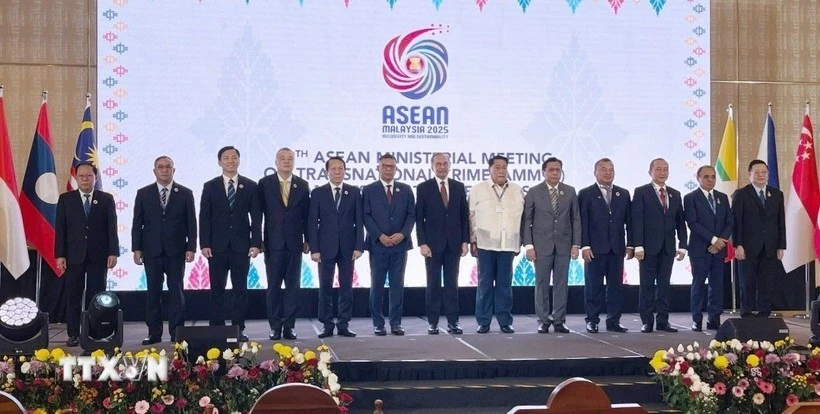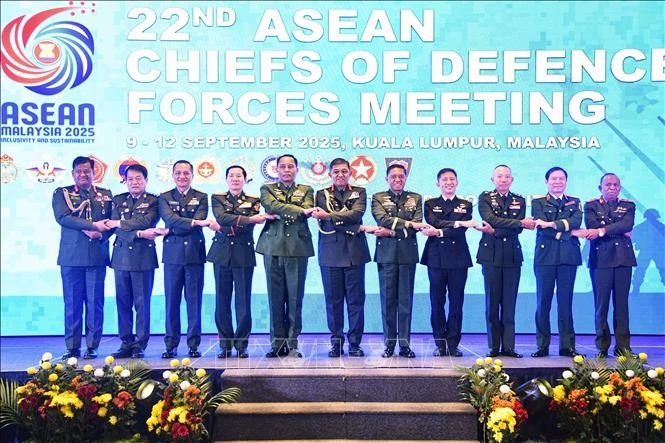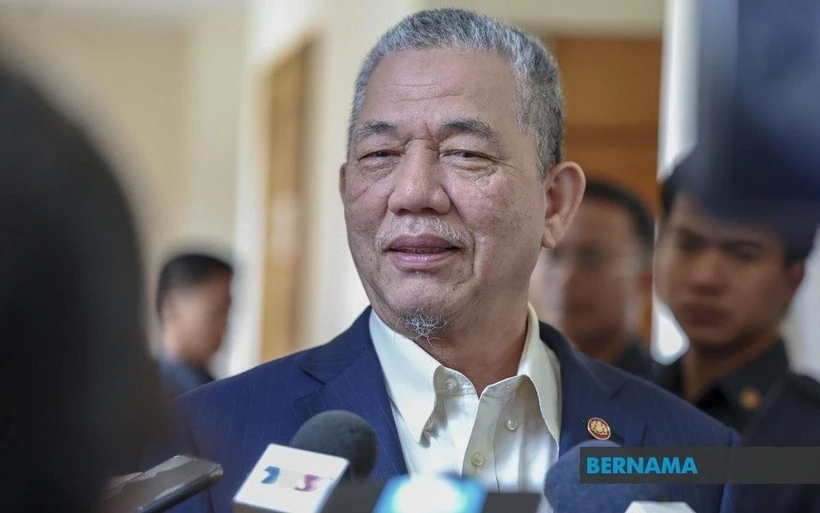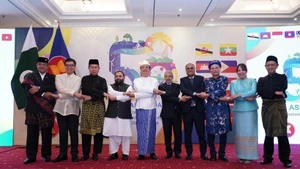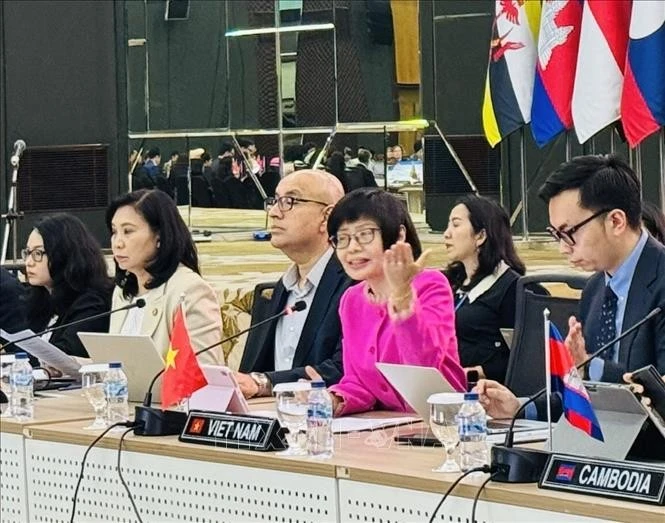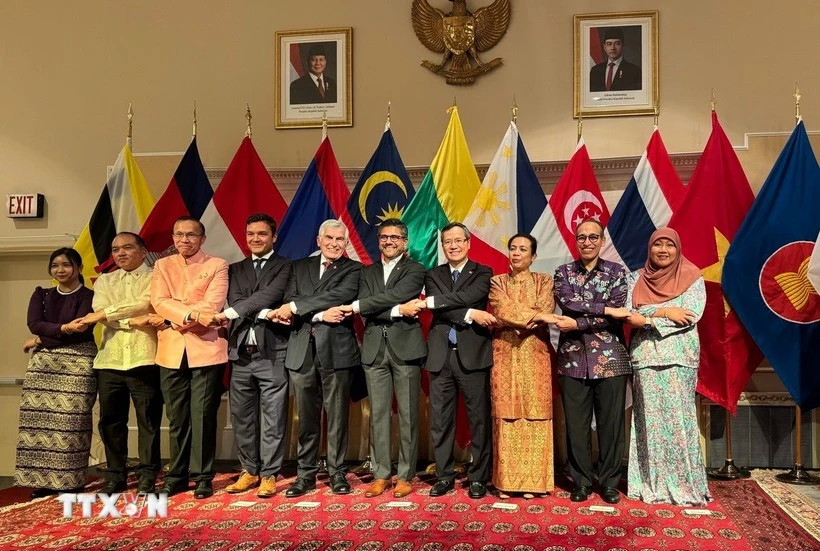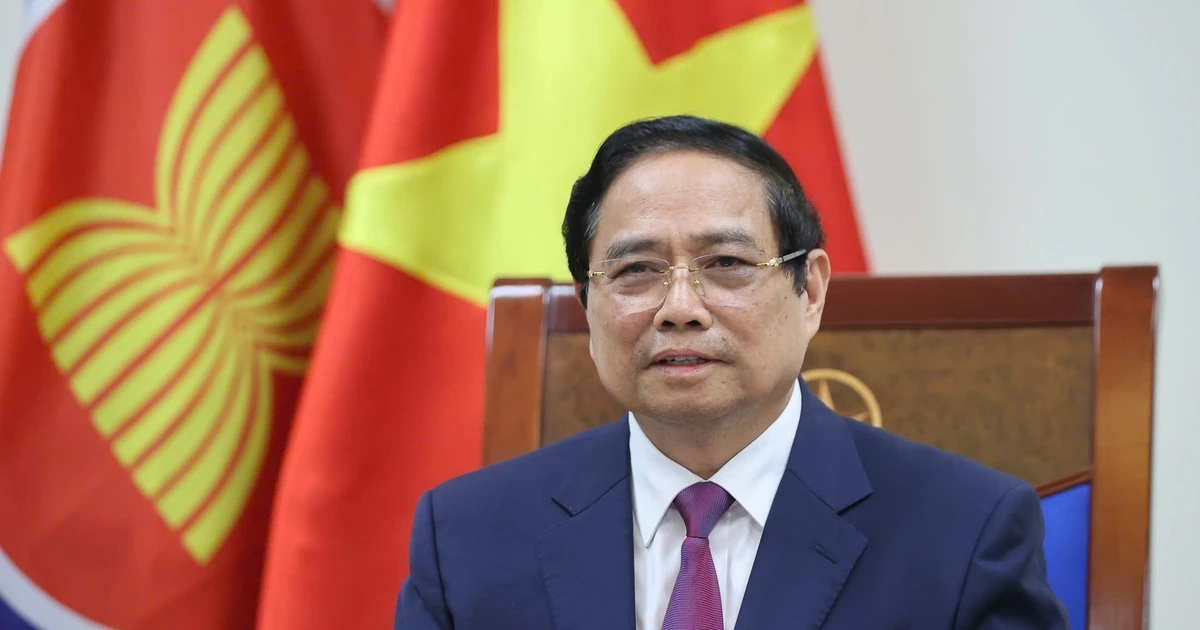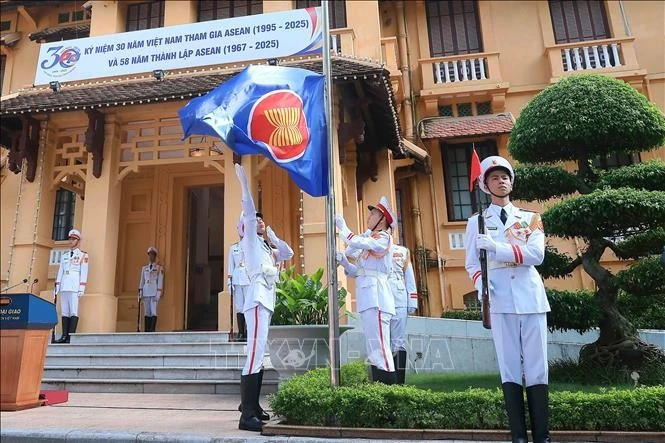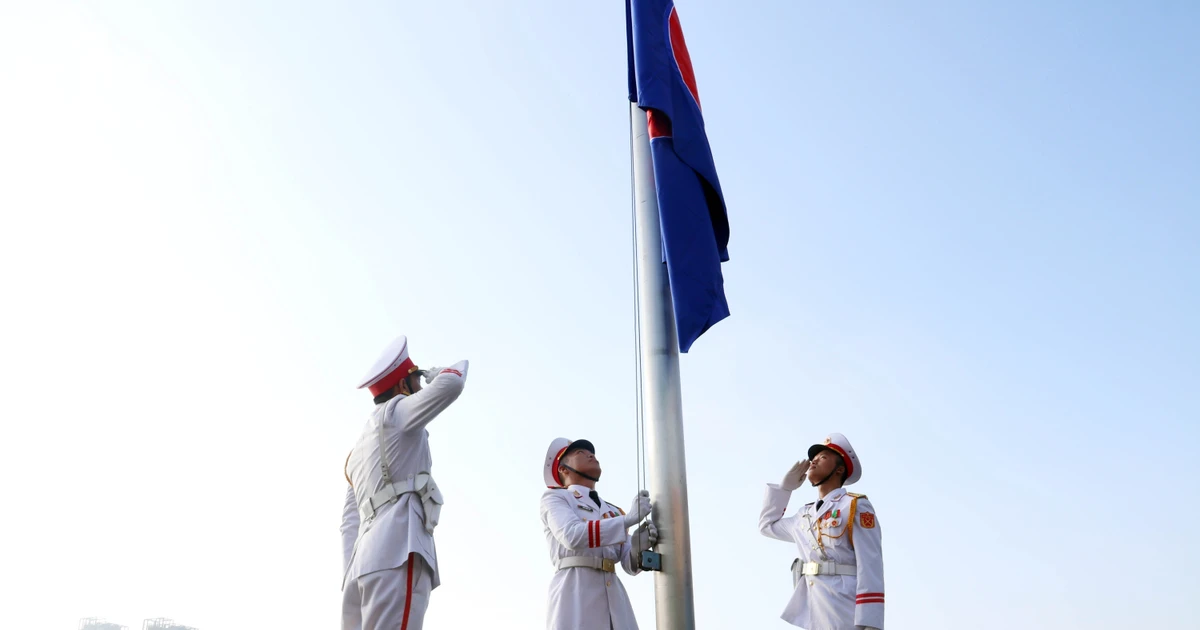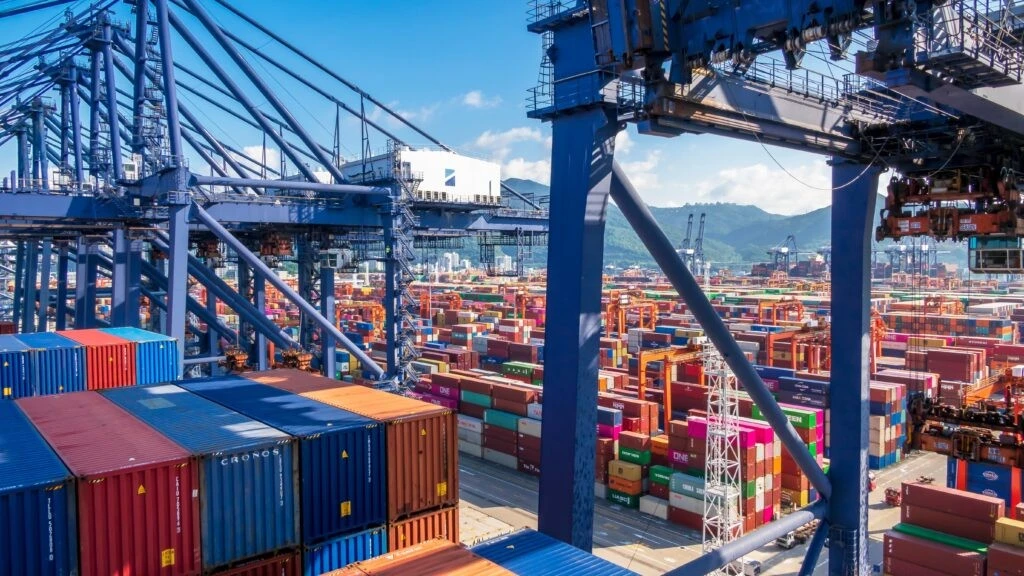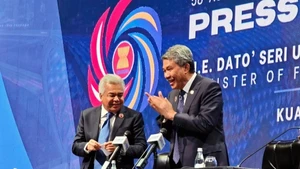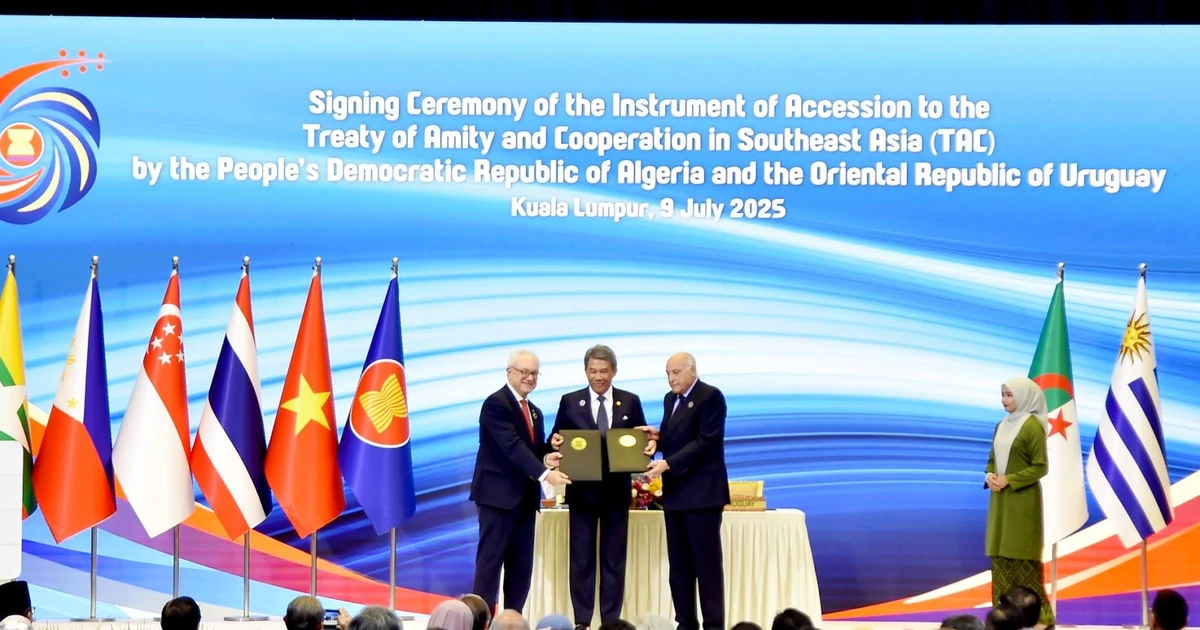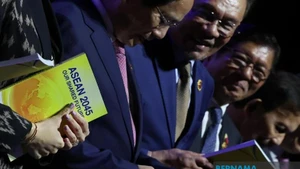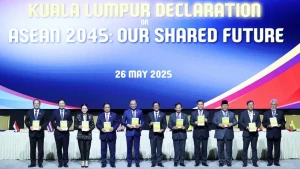1. ASEAN Community – An Overview
Subsequently in November 2004, at the tenth ASEAN Summit held in Vientiane, Laos, the leadership adopted what has come to be known as the ’Vientiane action plan’ which provides the framework for the enhancement of the three pillars and identifies specific measures that need to be undertaken to realise the bloc’s overall purpose.
The overall stated purpose of the ASEAN Political-Security Community (APSC), is to maintain and ensure security, peace and stability, and enhance member countries capacity to provide for regional security.
The co-operation within the APSC framework includes creating a comprehensive regional security and to respond to such non-traditional challenges as transnational crime, terrorism, natural disasters response efforts and maritime security.
The bloc’s proclamation is that no regional army, alliance or common defence alliance will be formed and member countries are free to follow their own foreign and defence policies.
The AEC envisages a single market and production base, a highly competitive economic region, a region of equitable economic development and a region fully integrated into the global economy.
To realise the target, the AEC will focus on measures to transform ASEAN into a region with free movement of goods, services, investment, skilled labour, and a freer flow of capital. However, the AEC will not form a monetary union like the European Union (EU) has.
The ASCC aims to contribute to realising a people-oriented socially responsible ASEAN Community with a view towards achieving an enduring solidarity and unity among the peoples and Member States of ASEAN. It seeks to forge a common identity and build a caring and sharing society which is inclusive and where the well-being, livelihood, and welfare of the peoples are enhanced.
Such high targets do not mean that the ASEAN Community will become a super-national organisation, but rather lead to the promotion of a regional co-operation and connectivity, which will bring significant and dramatic effects on regional people’s life.
2. The APSC
In the Declaration of ASEAN Concord II (Bali Concord II) in 2003, the ASC is defined as one of three pillars of the ASEAN Community, which aims to ensure that countries in the region live at peace with one another and with the world in a just, democratic and harmonious environment.
From Indonesia’s initiative, the APSC has been a higher development of the bloc’s political and security co-operation. Specific activities to build the APSC have been included in the ASC Plan of Action in 2003, Vientiane Action Plan (VAP) in 2004 and the 2009-2015 APSC Blueprint.
The APSC Blueprint envisages ASEAN to be a rules-based Community of shared values and norms; a cohesive, peaceful, stable and resilient region with shared responsibility for comprehensive security; as well as a dynamic and outward-looking region in an increasingly integrated and interdependent world.
ASEAN has promoted political co-operation, shaped and shared norms through the Treaty of Amity and Co-operation in South East Asia (TAC) and the Treaty on the Southeast Asian Nuclear Weapon-Free Zone (SEANWFZ) and the Declaration on the Conduct of Parties (DOC) in the East Sea, as well as enhanced maritime security co-operation.
The bloc has taken confidence building measures, promoted dialogues and mutual understanding to prevent conflicts, enhanced co-operation in national defence and security, as well as fostered conflict resolution, pacific settlement of disputes, post-conflict peace-building and non-traditional security issues.
ASEAN has also actively strengthened its centrality in regional co-operation and community building and promoted enhanced ties with external parties as a dynamic and outward-looking region in an increasingly integrated and interdependent world.
Co-operation in the three pillars has been enhanced and deepened. Defence co-operation has been fostered through the ASEAN Defence Ministers’ Meeting (ADMM), ADMM Plus with eight partners, while maritime security co-operation has been strengthened through the ASEAN Maritime Forum (AMF), Expanded AMF (EAMF).
The ASEAN Inter-governmental Commission on Human Rights (AICHR) was established in accordance with the ASEAN Charter and the ASEAN Human Rights Declaration (AHRD) was passed for the first time to re-affirm the co-operation commitment to promote and protect fundamental freedom rights of regional people.
The ASEAN Institute of Peace and Reconciliation (AIPR) was founded to support studies about solutions for peace and reconciliation in the region.
To consolidate and maintain its centrality in the forming regional structure, ASEAN has incessantly expanded and deepened comprehensive co-operation with partners for mutual benefit, enhanced and diversified regional co-operative forums and dialogues, encouraged partners to make constructive and positive contributions to regional peace, stability and development, as well as to the ASEAN Community construction and connectivity, basing on the bloc’s targets and relationship principles.
3. The AEC
As one of three important pillars for the establishment of the ASEAN Community by 2015 as envisioned in the ASEAN Vision 2020 and the Bali Concord II, the AEC aims to form a stable and prosperous and highly competitive economic region, free flow of goods, services and investment and freer flow of capital while striving for an equitable economic development, poverty reduction and narrowing the socio-economic gap among member states.
ASEAN’s second medium term plan between 2004-2010 to realise the Vision 2020 and the VAP clarified the AEC’s targets, including strengthening the competitiveness through faster integration to boost the bloc’s economic growth and development.
The AEC blueprint, as part of the Community construction roadmap between 2009 and 2015, defines major actions to build a single market and production base, including eliminating tariffs and non-tariff barriers, promoting trade facilitation, harmonising rules of origin, enhancing customs integration and ASEAN single window, facilitating free flows of service, investment and capital.
The member states will strengthen regional production network through infrastructure connectivity, especially in energy, transportation, IT and communication.
They have implemented many important agreements, including the ASEAN Free Trade Agreement (AFTA), the ASEAN Trade in Goods Agreement (ATIGA), the ASEAN Framework Agreement on Services (AFAS), the Framework Agreement on the ASEAN Investment Area (AIA), the ASEAN Comprehensive Investment Agreement (ACIA), the Framework Agreement on the ASEAN Industrial Co-operation (AICO) and the Roadmap for ASEAN Monetary and Financial Integration.
The most remarkable achievement of building the AEC has been the completion of tariff reduction from 0-5% since 2010 for six first members and for four new members by 2015, forming an open market without tariff barriers.
In other words, the AEC is a regional economic connectivity model basing on the bloc’s current economic co-operation mechanisms, with the supplement of free flow of labour and freer flow of capital.
To build a competitive economic region, ASEAN has boosted competition policy, consumer protection, intellectual property rights (IPR), infrastructure development and e-commerce.
To realise the target of equitable economic development, the bloc has adopted and implemented the ASEAN Framework for Equitable Economic Development (AFEED), including supporting new member countries and encouraging small and medium enterprises’ development.
To boost its integration into the global economy, ASEAN has enhanced the exploitation from Free Trade Agreements with China, Japan, the Republic of Korea, India, Australia and New Zealand, while actively negotiating for a Regional Comprehensive Economic Partnership (RCEP) to create an open economic space in East Asia.
4. The ASCC
The primary goal of the ASCC is to contribute to realising an ASEAN Community that is people-centred and socially responsible with a view to achieving enduring solidarity and unity among the nations and peoples of ASEAN by forging a common identity and building a caring and sharing society which is inclusive and harmonious where the wellbeing, livelihood, and welfare of the peoples are enhanced.
The ASCC will address the region’s aspiration to lift the quality of life of its people through co-operative activities that are people-oriented and environmentally friendly geared towards the promotion of sustainable development. The ASCC shall contribute to building a strong foundation for greater understanding, good neighbourliness, and a shared sense of responsibility.
The community is characterised by a culture of regional resilience, adherence to agreed principles, spirit of co-operation, collective responsibility, to promote human and social development, respect for fundamental freedoms, gender equality, the promotion and protection of human rights and the promotion of social justice.
The ASCC shall respect the different cultures, languages, and religions of the peoples of ASEAN emphasise their common values in the spirit of unity in diversity and adapt them to present realities, opportunities and challenges.
The ASCC will closely supplement and facilitate the APSC and the AEC.
The targets of building the ASCC have been specified in co-operation programmes, including the ASCC People-Oriented Action Plan and the VAP in 2004, as well as the ASCC Blueprint for the 2009-2015 period.
The Blueprint is focused on human development, social welfare and protection, social justice and rights, ensuring environmental sustainability and building ASEAN identity, narrowing the development gap.
ASEAN has taken various measures to realise the set targets.
5. Promoting connectivity and narrowing the development gap
To realise to the Community construction targets, ASEAN has passed and implemented a Blueprint on ASEAN Connectivity to enhance regional links in transportation, institution and people, towards expanding connectivity in East Asia, as well as boosting narrowing the development gap in the bloc through the Initiative for ASEAN Integration (IAI).

